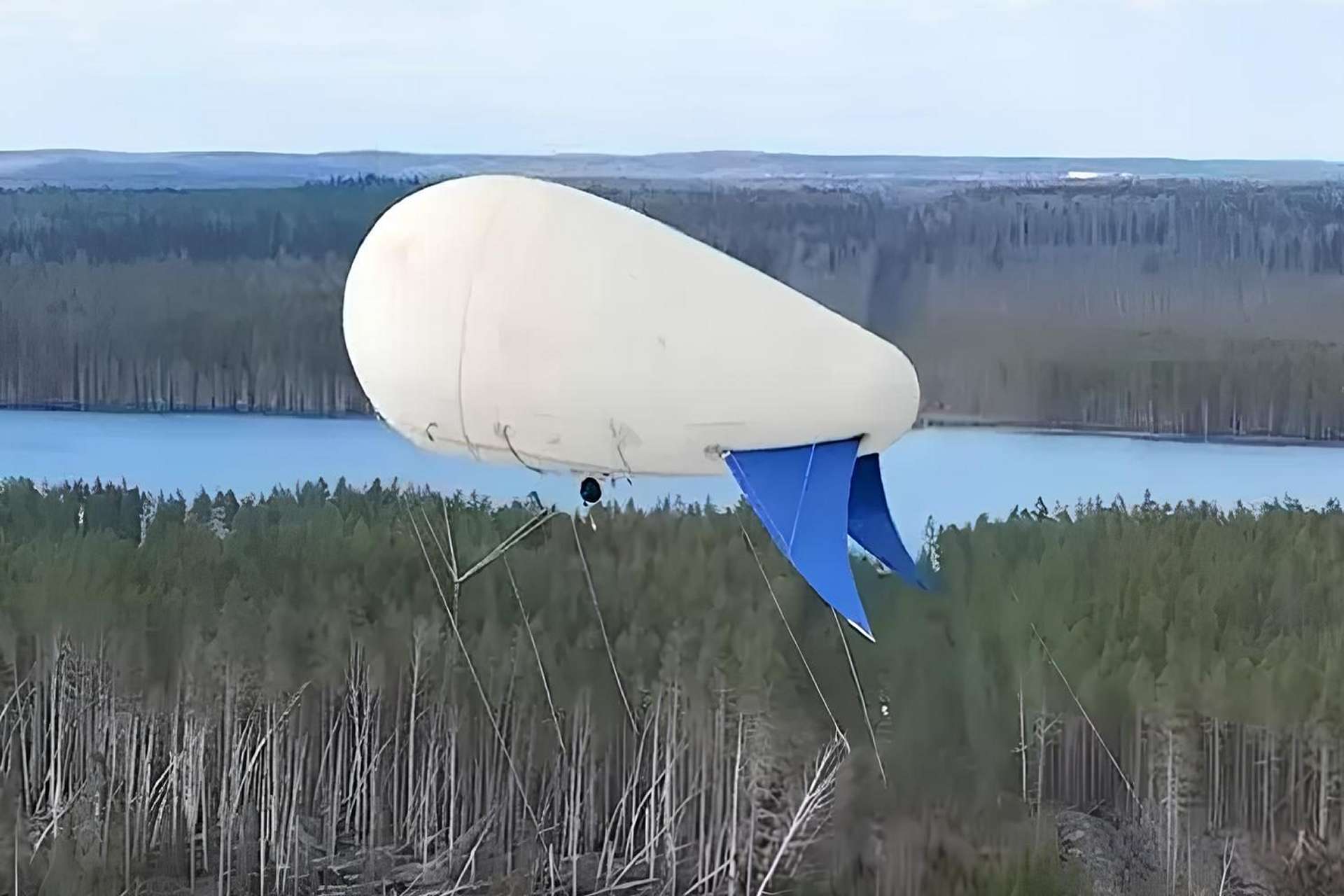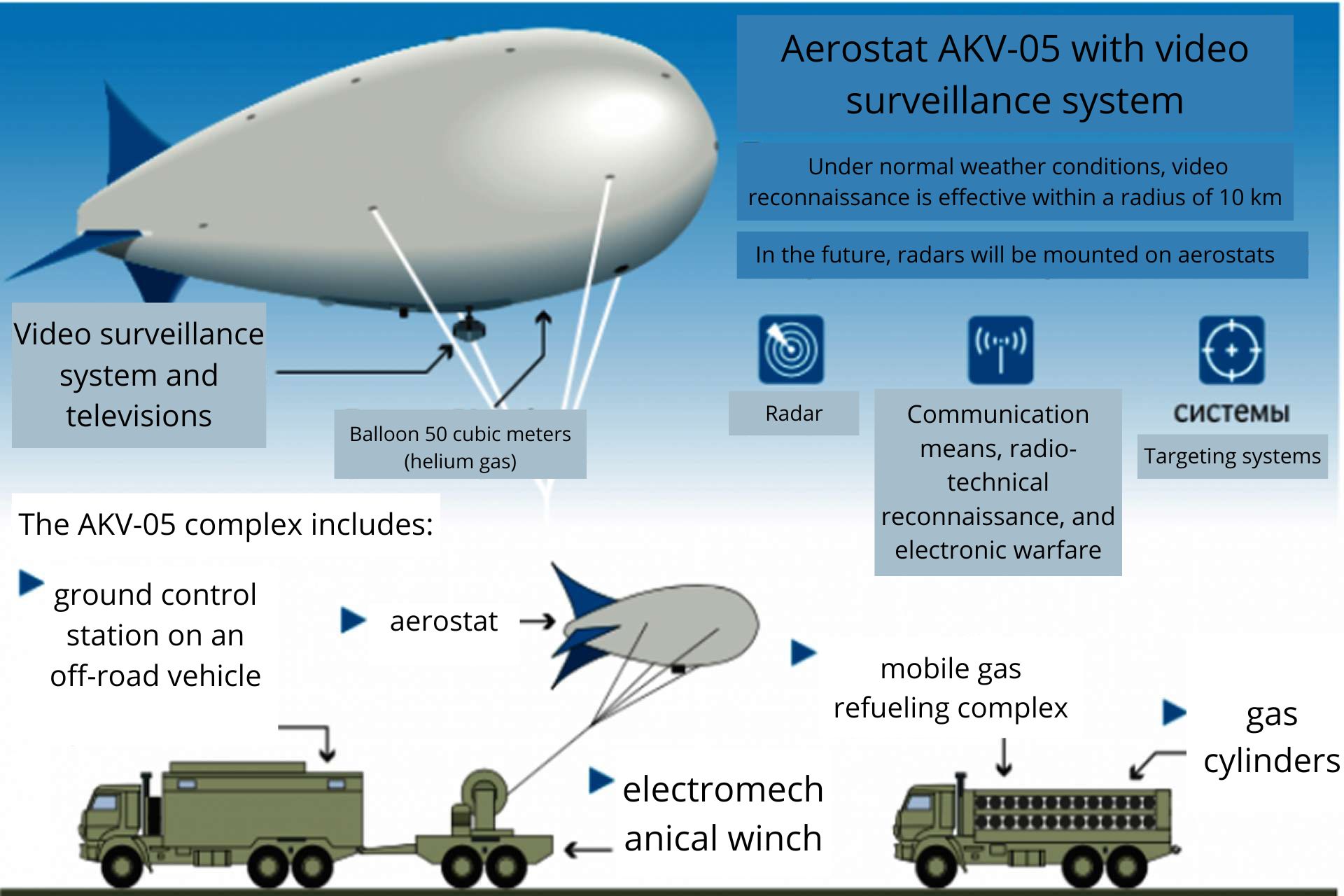Russia Unveils Aerostat-Based Anti-Drone Defense System

{loadposition bannertop}
{loadposition sidebarpub}
The Russian defense industry has taken a significant step forward with the introduction of a new anti-drone defense system called Barrier, developed by the Russian company Pervyy Dirizhabl (First Dirigible). This system utilizes aerostat technology, commonly known as barrage balloons, to counter unmanned aerial vehicles (UAVs).Follow Army Recognition on Google News at this link
Russian AKV-05 aerostat with an optical sensor on the border with Finland, 2024 (Picture source: “Russia 1” TV channel )
During a recent conference focused on UAV detection and countermeasures, representatives from First Dirigible showcased the Barrier system, which is specifically designed to protect strategic installations. The system operates by deploying a network of balloons that carry nets intended to capture approaching enemy drones. If a drone makes contact, the affected section of the net is designed to detach and is immediately replaced, maintaining the integrity of the defensive barrier.The balloons used in the Barrier system can lift up to 30 kg and reach a maximum altitude of 300 meters. This capability allows for substantial vertical coverage, creating an effective barrier against low-flying drones that could pose a threat to sensitive locations.Company officials have confirmed that the system has undergone successful testing at a dedicated testing site and has already secured its first orders. Production of the balloons will take place at the company’s own facilities, while the nets will be manufactured by specialized enterprises.Balloon-based barrier systems are not new and have been used since World War II, primarily to intercept bombers and the early V-1 cruise missiles. Their effectiveness during the German bombing campaigns over the UK, where they helped intercept over two hundred missiles, underscores their potential utility in modern warfare. Theoretically, the Barrier system could be equally effective against contemporary long-range attack drones that operate at relatively low altitudes and slower speeds compared to traditional aircraft.While the cost of the Barrier system has not been disclosed, it is expected to be significantly lower than the cost of installing full-fledged air defense systems around strategic facilities. This cost-effectiveness, combined with the operational capabilities of the system, presents a compelling case for its deployment as an economical alternative to more traditional defense measures.In addition to this new application, Russia has a history of using aerostats for long-term surveillance and reconnaissance, particularly along the country’s borders and in combat zones. Military units, including those from the FSS, employ AKV-05 aerostats equipped with optical, thermal, and radio surveillance systems, capable of conducting reconnaissance up to distances of 10 kilometers.
Based on the information provided, the reconnaissance system comprises an aerostat, a command vehicle, and a specialized gas filling station mounted on an automotive chassis (Picture source: Russian Media )

{loadposition bannertop}
{loadposition sidebarpub}
The Russian defense industry has taken a significant step forward with the introduction of a new anti-drone defense system called Barrier, developed by the Russian company Pervyy Dirizhabl (First Dirigible). This system utilizes aerostat technology, commonly known as barrage balloons, to counter unmanned aerial vehicles (UAVs).
Follow Army Recognition on Google News at this link
Russian AKV-05 aerostat with an optical sensor on the border with Finland, 2024 (Picture source: “Russia 1” TV channel )
During a recent conference focused on UAV detection and countermeasures, representatives from First Dirigible showcased the Barrier system, which is specifically designed to protect strategic installations. The system operates by deploying a network of balloons that carry nets intended to capture approaching enemy drones. If a drone makes contact, the affected section of the net is designed to detach and is immediately replaced, maintaining the integrity of the defensive barrier.
The balloons used in the Barrier system can lift up to 30 kg and reach a maximum altitude of 300 meters. This capability allows for substantial vertical coverage, creating an effective barrier against low-flying drones that could pose a threat to sensitive locations.
Company officials have confirmed that the system has undergone successful testing at a dedicated testing site and has already secured its first orders. Production of the balloons will take place at the company’s own facilities, while the nets will be manufactured by specialized enterprises.
Balloon-based barrier systems are not new and have been used since World War II, primarily to intercept bombers and the early V-1 cruise missiles. Their effectiveness during the German bombing campaigns over the UK, where they helped intercept over two hundred missiles, underscores their potential utility in modern warfare. Theoretically, the Barrier system could be equally effective against contemporary long-range attack drones that operate at relatively low altitudes and slower speeds compared to traditional aircraft.
While the cost of the Barrier system has not been disclosed, it is expected to be significantly lower than the cost of installing full-fledged air defense systems around strategic facilities. This cost-effectiveness, combined with the operational capabilities of the system, presents a compelling case for its deployment as an economical alternative to more traditional defense measures.
In addition to this new application, Russia has a history of using aerostats for long-term surveillance and reconnaissance, particularly along the country’s borders and in combat zones. Military units, including those from the FSS, employ AKV-05 aerostats equipped with optical, thermal, and radio surveillance systems, capable of conducting reconnaissance up to distances of 10 kilometers.

Based on the information provided, the reconnaissance system comprises an aerostat, a command vehicle, and a specialized gas filling station mounted on an automotive chassis (Picture source: Russian Media )




